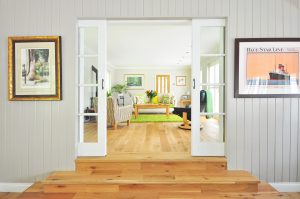 Imagine the ideal home for a family. A house built in an upscale area that is in close proximity to all important amenities and education centres in the locality. Inside the property, there is a huge perfectly landscaped garden that has footpaths for walks. Inside the house, the huge windows allow natural sunlight to filter in in all rooms. However, there is a problem. The house is empty. To date, it has not been snapped up by a buyer. Today it is no secret that many great houses remain empty because prospective owners are not inspired by the space and they lack the imagination to imagine the possibilities of what they could do with a house like the one described above.
Imagine the ideal home for a family. A house built in an upscale area that is in close proximity to all important amenities and education centres in the locality. Inside the property, there is a huge perfectly landscaped garden that has footpaths for walks. Inside the house, the huge windows allow natural sunlight to filter in in all rooms. However, there is a problem. The house is empty. To date, it has not been snapped up by a buyer. Today it is no secret that many great houses remain empty because prospective owners are not inspired by the space and they lack the imagination to imagine the possibilities of what they could do with a house like the one described above.
However, there is a solution to how prospective buyers could be attracted to the house above. The answer lies in virtual staging. The latest virtualisation technology used in staging houses can add décor to a property, photographs and even furnishings. Using virtualisation technology and achieving a staged look that is indiscernible from the real look of a property requires skill, but it is indeed possible.
Below, we will discuss some of the reasons why it is better to use virtual staging when selling a property instead of relying on traditional staging. Fourwalls can let you make floor plans, which are also useful, but don’t discount virtual staging before you see all these great benefits:
1. Virtual Staging is Less Expensive
Dressing up a room when expecting a prospective buyer can end up costing more than £1,000. If the room being staged is bigger and luxurious, the cost of staging the space traditionally can soar astronomically. However, through the use of virtual staging, premium furniture, décor and furnishings which suit the opulence of the property can be added without any expense.
2. Photographs Taken After Virtual Staging are Better at Attracting Buyers
Once a buyer is provided with photographs which show how a house can be put to use, they are usually better able to imagine the space containing their valuables. In traditional staging, bare floors and walls do not usually give the buyer a perspective of what they can do with the space. However, when a space is spruced up through virtual staging, a buyer usually gets to gauge whether they space suits their style and what they can do with their own furnishings in the space.
3. Virtual Staging is Not Disruptive
In some house sales, such as during a divorce, matters usually have to be handled sensitively. In other cases, the seller of the house may be living far away. In such instances, carrying out traditional staging can be really disruptive to all the parties involved. Imagine if the seller is forced to use traditional staging and the client does not buy or like the house! However, through virtual staging, the entire process of setting up the house for the market can be completed in one sitting.
4. Virtual Staging Can Be Used to Hide Bad Décor
People have different tastes when it comes to furnishing and decorating their houses. Décor that appeals to one person can look hideous to another. In properties that need their décor updated before they are seen by clients, virtual staging can be extremely useful.
5. Virtual Staging Can Be Used to Make New Houses Appear Complete
In many cases, property builders often face the challenge of completing units with the projected time frame. This usually means that the projected sales have to be pushed back. To put a house on the market, you have to provide proof that the unit is complete and this is impossible with an incomplete house. However, virtual staging can be exploited to make an incomplete house look ready for habitation. Using 3D visualisation, a person can add incomplete rooms and fittings thus allowing a yet to be complete house to be put on the market as the contractor adds the final touches.